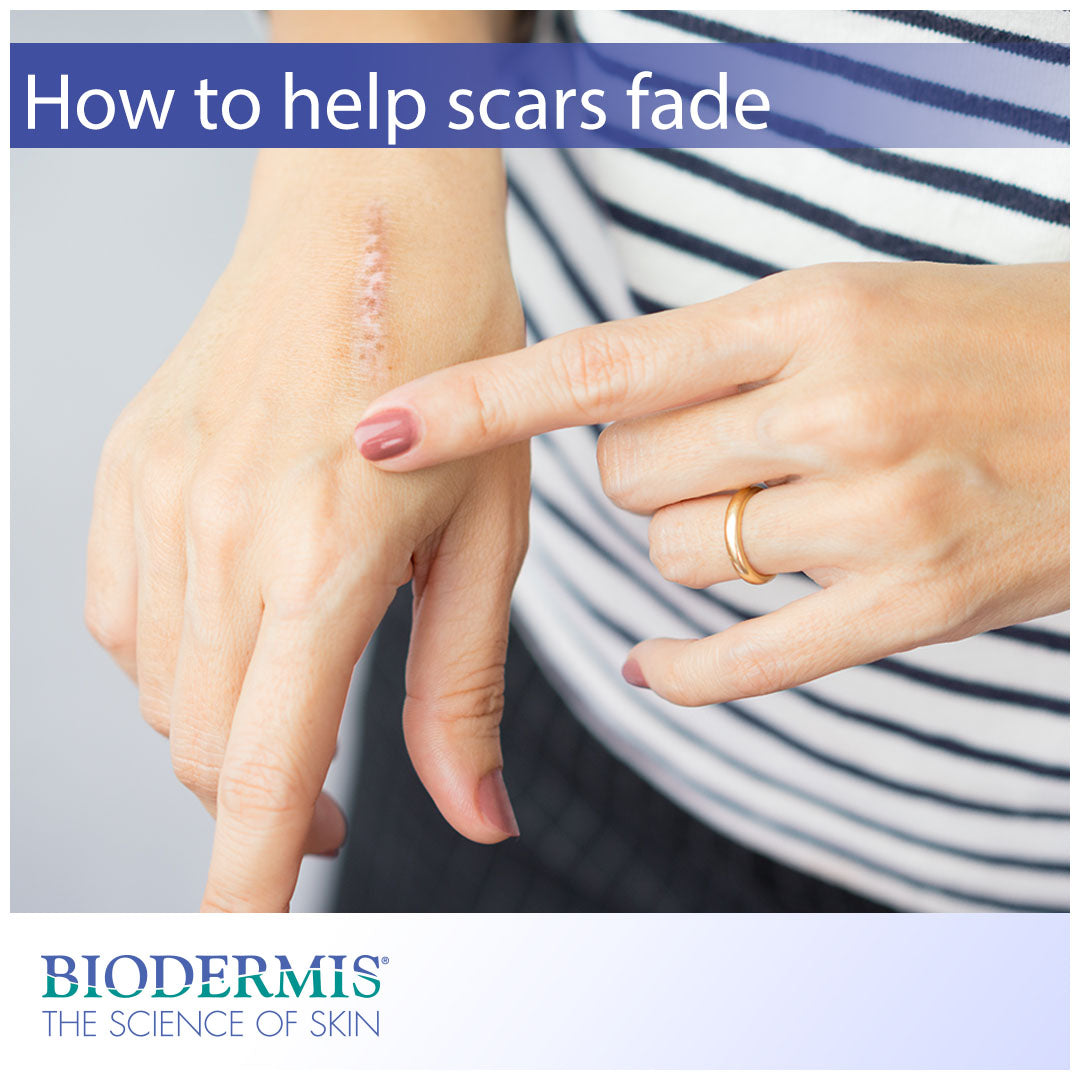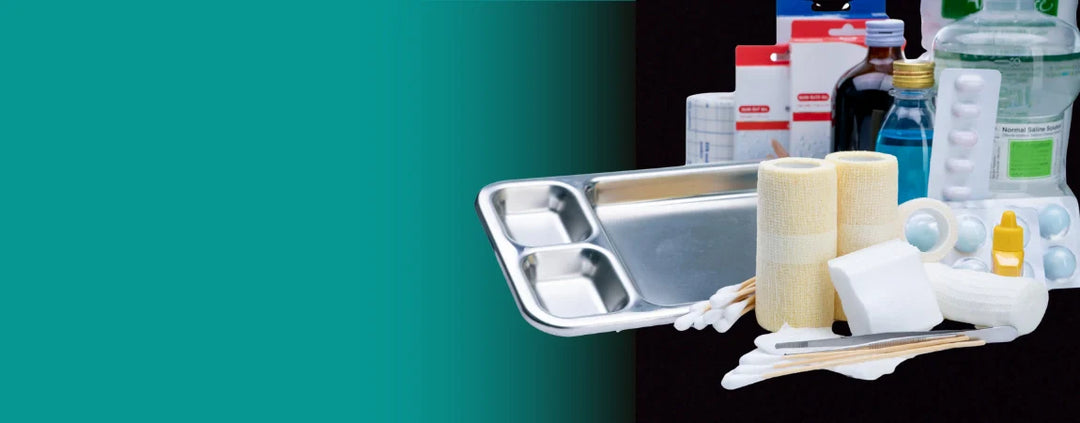How to Help Scars Fade
Posted May 2021 by Biodermis
Scars are the result of a complex and dynamic wound healing process that occurs after the skin is damaged due to surgery or injury. While some scars fade over time, there are a number of factors that can lead to abnormal scar types, classified as keloids or hypertrophic scars. These scars are characterized by their raised and discolored appearance. These scars can be itchy, painful, and burdensome to the patient. For these reasons, patients seek out the best scar treatment option that is safe and effective for all ages and skin types. Continue reading to learn what you can do to help flatten and fade your old and new post-operative scars.
For some people, wounds heal evenly and scars fade over time without medical intervention or scar treatment. For others, no matter what they do, it seems they are always left with highly noticeable scars. Certain scar types, such as keloids and hypertrophic scars, are usually the result of genetics and environmental factors. It is a known fact, for instance, that people with darker skin tones are more likely to develop keloids. Other factors, such as age, wound infection, re-injury, and alcohol/cigarette consumption can inhibit wound healing and lead to greater scarring. Depending on how the wound was attained—either by injury or surgery—can also determine how the resulting scar looks.
The first step to making sure you don’t develop an abnormal scar type is to practice wound care best practices. This means to rinse the wound with soap and running water to clear it of germs and dirt. Once the wound is clean, it should be wrapped with a bandage to protect it from environmental factors and drying out. Wounds heal best when there is moisture, so using an antibiotic ointment can help in this way. Once the wound is fully healed, then the scarring phase will begin. Scars can take up to two years to fully mature, so what it looks like at the beginning isn’t what it will look like in a few years. Because of this time frame, scar treatment can be effective for new and old scars.
The most effective topical scar treatment option available to physicians and patients is medical silicone gel. Medical silicone has been used for over 30 years as a topical solution for scar therapy and is backed by clinical evidence. For these reasons, surgeons and dermatologists recommend that their patients use medical silicone after their surgical procedures. A patient can begin to use silicone as soon as their wound is fully healed and the stitches have been removed. If the incision site is still highly sensitive after the healing process, it’s advised to wait for the sensitivity to subside before using silicone.
Scars need an optimal environment just like wounds to heal properly. Silicone induces moisture to the scar bed while also allowing oxygen to be present in the environment. This ideal balance of moisture and oxygen is known as homeostasis. This homeostasis signals cells in the scar tissue to scale back collagen production, which has the effect of flattening and reducing the scar. Medical silicone is hypoallergenic and safe for children and adults. Products can be purchased through your physician or online at biodermis.com.
For some people, wounds heal evenly and scars fade over time without medical intervention or scar treatment. For others, no matter what they do, it seems they are always left with highly noticeable scars. Certain scar types, such as keloids and hypertrophic scars, are usually the result of genetics and environmental factors. It is a known fact, for instance, that people with darker skin tones are more likely to develop keloids. Other factors, such as age, wound infection, re-injury, and alcohol/cigarette consumption can inhibit wound healing and lead to greater scarring. Depending on how the wound was attained—either by injury or surgery—can also determine how the resulting scar looks.
The first step to making sure you don’t develop an abnormal scar type is to practice wound care best practices. This means to rinse the wound with soap and running water to clear it of germs and dirt. Once the wound is clean, it should be wrapped with a bandage to protect it from environmental factors and drying out. Wounds heal best when there is moisture, so using an antibiotic ointment can help in this way. Once the wound is fully healed, then the scarring phase will begin. Scars can take up to two years to fully mature, so what it looks like at the beginning isn’t what it will look like in a few years. Because of this time frame, scar treatment can be effective for new and old scars.
The most effective topical scar treatment option available to physicians and patients is medical silicone gel. Medical silicone has been used for over 30 years as a topical solution for scar therapy and is backed by clinical evidence. For these reasons, surgeons and dermatologists recommend that their patients use medical silicone after their surgical procedures. A patient can begin to use silicone as soon as their wound is fully healed and the stitches have been removed. If the incision site is still highly sensitive after the healing process, it’s advised to wait for the sensitivity to subside before using silicone.
Scars need an optimal environment just like wounds to heal properly. Silicone induces moisture to the scar bed while also allowing oxygen to be present in the environment. This ideal balance of moisture and oxygen is known as homeostasis. This homeostasis signals cells in the scar tissue to scale back collagen production, which has the effect of flattening and reducing the scar. Medical silicone is hypoallergenic and safe for children and adults. Products can be purchased through your physician or online at biodermis.com.
Biodermis is an innovative market leader with 30 years of expertise in the medical silicone industry. Visit Biodermis.com today to explore a complete range of scar management and post-operative care solutions.
PHYSICIANS AND MEDICAL PROFESSIONALS: REFER OR RESELL?
Biodermis offers custom tailored referral programs designed to simplify and reduce the cost of your patients' post-op care. Additionally, we offer professional pricing if you opt to retail our products. Give us a call at 800.322.3729, and we will be happy to provide additional details on these programs.



